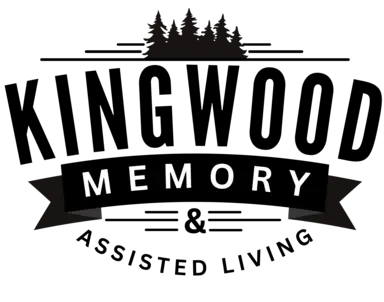The field of 3D bioprinting has witnessed remarkable advancements in recent years, offering unprecedented opportunities for regenerative medicine, tissue engineering, and disease modeling. One of the most intriguing applications of 3D bioprinting is the fabrication of functional brain cells, including neurons and glial cells, with the potential to revolutionize our understanding of brain function, enable personalized medicine, and facilitate the development of novel therapies for neurological disorders. This analysis explores the principles of 3D bioprinting, the challenges and opportunities in printing functional brain cells, and the implications for neuroregeneration and disease modeling.
Principles of 3D Bioprinting
– Bioink Formulation:
3D bioprinting involves the precise deposition of bioink, a biomaterial containing living cells, into three-dimensional structures layer by layer. Bioinks are formulated to mimic the native extracellular matrix (ECM) of tissues and organs, providing a supportive environment for cell adhesion, proliferation, and differentiation.
– Printing Techniques:
Various 3D bioprinting techniques, including inkjet-based, extrusion-based, and laser-based methods, are used to fabricate complex tissue constructs with high spatial resolution and cell viability. These techniques enable the deposition of multiple cell types, growth factors, and biomaterials in predefined spatial patterns, allowing for the creation of intricate tissue architectures.
– Cell Viability and Functionality:
Maintaining cell viability and functionality during the bioprinting process is critical for the successful fabrication of functional tissues. Optimization of printing parameters, such as printing speed, nozzle size, and cell density, ensures uniform cell distribution, adequate nutrient supply, and minimal shear stress to preserve cell viability and function in printed constructs.
Printing Functional Brain Cells
– Neuronal Cell Printing:
3D bioprinting techniques have been employed to fabricate neuronal cell constructs with precise spatial organization and neuronal connectivity. Neuronal cells derived from induced pluripotent stem cells (iPSCs) or primary cell sources are encapsulated in bioink formulations containing neurosupportive factors and ECM components, allowing for the generation of organized neuronal networks in vitro.
– Glial Cell Printing:
Glial cells, including oligodendrocytes, astrocytes, and microglia, play essential roles in supporting neuronal function, myelination, and immune regulation in the brain. Bioprinting approaches have been developed to fabricate glial cell constructs and co-culture systems, enabling the study of glial cell interactions, myelination dynamics, and neuroinflammatory responses in neurological disorders.
Opportunities and Challenges
– Disease Modeling:
3D bioprinting of functional brain cells holds immense potential for disease modeling and drug discovery in neurology. Patient-specific iPSC-derived neurons and glial cells can be bioprinted to recapitulate disease phenotypes, study disease mechanisms, and screen potential therapeutics in vitro, providing insights into disease pathogenesis and personalized treatment strategies.
– Neuroregeneration:
Bioprinted neuronal and glial cell constructs offer promising avenues for neuroregeneration and neural tissue repair in neurological injuries and disorders. Biomimetic scaffolds containing neurotrophic factors, extracellular matrix components, and cell adhesion molecules can be bioprinted to promote axonal regeneration, synaptic connectivity, and functional recovery in damaged brain tissue.
Vascularization and Integration:
Achieving vascularization and integration of bioprinted brain cell constructs with host tissue remains a significant challenge in 3D bioprinting. Strategies to incorporate vascular networks, enhance tissue perfusion, and promote host integration are under investigation to improve the survival, functionality, and long-term engraftment of bioprinted brain cells in vivo.
Future Directions
– Multi-Cellular Systems:
Advancements in 3D bioprinting technology enable the fabrication of multi-cellular systems comprising neurons, glial cells, and vascular components to recapitulate the complexity of the brain microenvironment. Co-culture models incorporating neurons, astrocytes, and endothelial cells allow for the study of neurovascular interactions, blood-brain barrier function, and drug transport across the brain endothelium.
– Personalized Medicine:
The development of patient-specific 3D bioprinted brain cell models holds promise for personalized medicine approaches in neurology. By using patient-derived iPSCs, researchers can create customized brain cell constructs that accurately reflect the genetic background, disease phenotype, and drug responsiveness of individual patients, facilitating tailored treatment strategies and precision medicine approaches.
Conclusion
3D bioprinting of functional brain cells represents a transformative approach with far-reaching implications for neuroregeneration, disease modeling, and personalized medicine. By harnessing the power of 3D bioprinting technology, researchers aim to unlock the mysteries of the brain, develop innovative therapies for neurological disorders, and pave the way towards a future where functional brain tissue can be engineered and regenerated to restore lost function and improve quality of life for patients affected by brain injuries and diseases.
Thank you for taking the time to explore Kingwood Memory Care & Assisted Living. We’re committed to providing compassionate and personalized care for individuals with memory-related challenges. If you have any questions or would like to learn more about our services, please don’t hesitate to reach out to us at 281.892.1400 or via email at info@kingwoodmemorycare.com. We’re here to support you and your loved ones on this journey.





